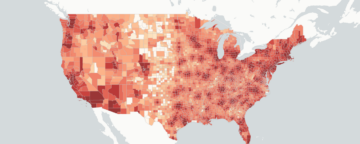Since 1950 males outnumber female movie characters 2 to 1
But when present, females twice as likely to be involved in sexual scenes;
Both males and females increasingly involved in violence
PHILADELPHIA – Annenberg Public Policy Center (APPC) research that analyzed 855 top 30 box-office films from 1950 to 2006 shows that women have been consistently underrepresented as main characters for at least six decades. The ratio of male to female characters has been steady at about 2 to 1 (see Figure 1) over this time period.
In a further analysis, female characters were found to be twice as likely to be seen in explicit sexual scenes as males (see Figure 2), while male characters were more likely to be seen as violent (see Figure 3). Nevertheless, violence in films has increased over time for both male and female main characters.
The study, authored by Amy Bleakley, Patrick E. Jamieson and Daniel Romer of the APPC, was published online in the Journal of Adolescent Health.
"We were surprised to see the same representation of women today as was prevalent in the 1950s," said Dan Romer who co-authored the study. "With women increasingly playing major roles in all walks of life, Hollywood appears to remain in the mindset of a much earlier era."
Research study video press release
The final sample consisted of 20,073 5-minute segments from 855 top-grossing movies. Trained coders assessed each segment for the presence of sexual and violent content. Sexual content included kissing (on lips), nudity, sexual behavior, or sexual intercourse, implicitly or explicitly shown, but the authors differentiate between kissing on the lips and more explicit content such as complete nudity or intercourse. Violent content was defined as intentional acts (e.g., to cause harm, to coerce, or for fun) where the aggressor makes or attempts to make some physical contact that has potential to inflict injury or harm.
"It’s disheartening to see that unbalanced portrayals of men and women persist in popular films," noted Amy Bleakley, the lead author of the paper. "Movie-going youth – the largest consumers of movies per capita – who are repeatedly exposed to portrayals of women as sexual and men as violent may internalize these portrayals."
"One concern about pushing for greater inclusion of women in today’s films is that women may be put into more violent roles, a trend we observed for both men and women," added study co-author Patrick E. Jamieson. "Such characters would not represent the many roles that women are playing in the world today compared to 1950."
Data from the study were collected as part of The Coding of Media and Health Project (CHAMP) at the APPC. The project evaluates media portrayal of risky health behaviors across time and advances the scholarly community’s understanding of its influence. It covers popular films, television, music and music videos, and includes sex, violence, tobacco, alcohol, drug use, and suicide. CHAMP has content analyzed more than half a century’s worth of top 30-grossing movies since 1950, for a total of 855 films.
Download the full press release as an Adobe Acrobat PDF file here.


